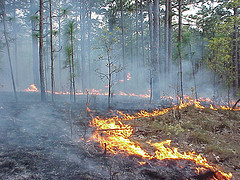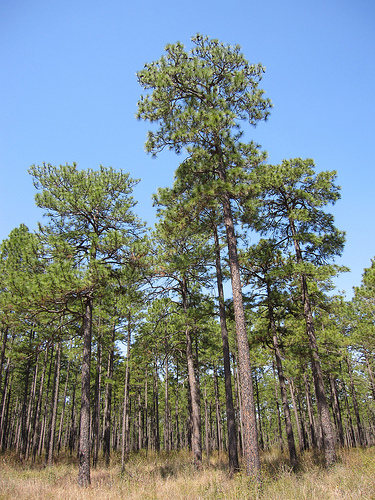According to the Mississippi Prescribed Fire Council, periodic fire played an important ecological role in shaping southern forests and grasslands. Ironically, the Mississippi Forestry Commission is charged by law to suppress wildfires occurring day or night on approximately 19.79 million acres of timbered and uncultivated lands. Wildfire detection is provided by airplane surveillance coupled with the public's reporting of wildfires using toll-free numbers provided by the Mississippi Forestry Commission.
The key to this apparent conflict, of course, is what constitutes a “wildfire” versus a “prescribed fire.” Both wildfires and prescribed fires may be naturally set by lightning or set by people. The difference is that prescribed fires are set or allowed to burn in areas where fire is deemed desirable, to cut down on dangerous fuel loads and/or benefit native species adapted to fire.
The goals of the Mississippi Prescribed Fire Council are:
- Acquiring greater liability protection for responsible use of prescribed fire
- Public education about importance and applications of prescribed fire
- Enhancing access to and availability of prescribed burning training
- Increasing use of prescribed fire on public and private lands to restore ecological functions, enhance wildlife and plant communities and reduce hazardous forest or grassland fuel loads
Longleaf Pine and Fire
Longleaf  pine is the premier example of a native Mississippi ecosystem adapted to fire. It is also a relict landscape, having been largely replaced with loblolly pine. At one time, longleaf pine forests covered 90 million acres across the Southeast, but now only scattered remnants totaling 3 million acres remain. Most are privately owned.
pine is the premier example of a native Mississippi ecosystem adapted to fire. It is also a relict landscape, having been largely replaced with loblolly pine. At one time, longleaf pine forests covered 90 million acres across the Southeast, but now only scattered remnants totaling 3 million acres remain. Most are privately owned.
Fire management goes hand-in-hand with longleaf pine restoration. A number of longleaf pine research and restoration programs are underway, since this is an ecosystem rich in beauty, historical interest . . . and endangered species. These include the eastern indigo snake, gopher tortoise, red-cockaded woodpecker, striped newt, red-wolf, and Alabama canebreak pitcher plant, to name a few.
As the Auburn University Center for Longleaf Pine Ecosystems website states: “Interest in the restoration and management of longleaf pine ecosystems is growing because of increasing enthusiasm for economic, ecological, and recreational returns from longleaf pine forests.”
Does Growing Longleaf Pine Make Money?
But can longleaf pine really turn a profit when it competes with shortleaf pines such as loblolly? Many myths about this species say no. But The Longleaf Alliance says yes. Established in 1995, their mission is the restoration of the longleaf pine forest ecosystem across its range, emphasizing its economic and ecological values through research, education, and outreach. A primary focus is to provide economically viable and voluntary options for recovery of longleaf on private lands where most of the losses are occurring.
The Alliance conducts “Longleaf Academies,” week-long courses for professionals and advanced landowners that provide in-depth instruction in all aspects of longleaf ecosystem conservation and management. The Alliance also administers technical support and cost-share programs for longleaf restoration in Alabama, Mississippi, and Georgia.
The Alliance website says “better quality seedlings have taken much of the risk out of planting longleaf pine.” Research has shown that with improved silvicultural techniques, longleaf is not a slow-growing tree - as it has been labeled - but just a slow starter. It can catch and pass faster starting loblolly within 12 to 30 years on poor to average sites.
The Longleaf Advantage

Other qualities of longleaf pine mean that landowners can realize income from their forests in the early years of establishment, before any trees are ever cut. Longleaf pine straw has become a hot commodity in the landscaping business. Returns of $100 to $500 per acre per year are possible, and studies to improve straw production are underway. Longleaf is also a heavier wood than other Southern pines, which means that longleaf will fetch a higher price than an equivalent volume of other pines.
Finally, longleaf is a native tree, more resistant to insect infestation and disease than other pines. It is fire-resistant and more likely to be standing after storms that sweep through during hurricane season. The economics, beauty and wildlife value of this endangered ecosystem mean it is poised to make a strong comeback in the south.
 Sign In
Sign In
 Sign In
Sign In
